Altra Olympus 5
Test Location: Marin, CA
Test Duration: 110 miles
Stated Stack Height (Men’s): 33 mm (heel) / 33 mm (forefoot)
Stated Heel-to-Toe Drop: 0 mm
Stated Features:
- Original Footshape™ Fit designed to address biological differences between men’s and women’s feet
- Balanced Cushioning™ Platform
- Compression molded EVA midsole for comfort and support
- Vibram MegaGrip outsole with aggressive, multi-directional Trailclaw™ lug pattern
- Gaitertrap™ heel tab
- An engineered mesh upper
- InnerFlex midsole technology to increase flexibility
Stated Weight per Shoe (US Men’s Size 9): 350 g / 12.3 oz
Blister Measured Weight per Shoe (US Men’s Size 8.5):
- Shoes + Laces: 302 g (left) & 308 g (right)
- Insoles: 19 g (left) & 17 g (right)
- Total: 321 g (left) & 325 g (right)
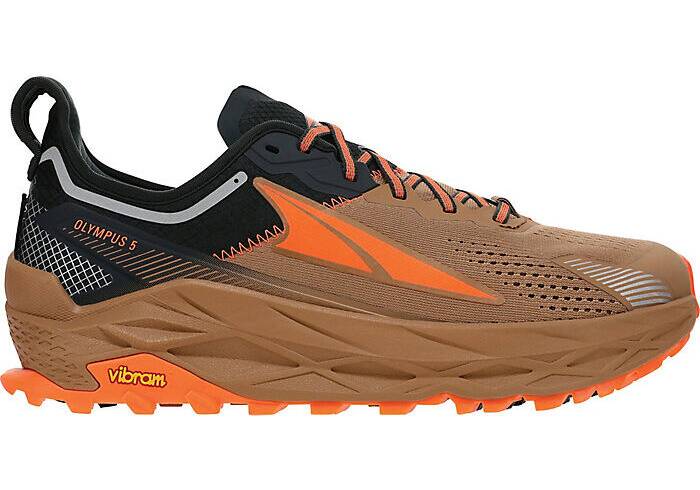
MSRP: $180
Size Tested: US Men’s 8.5 / EU 42
Reviewer: 5’9”, 150 lbs / 175 cm, 68 kg
Intro
In several respects, the original Altra Olympus was ahead of its time. As one of the first dedicated trail models to boast what at the time was considered a cartoonishly tall stack height, the shoe anticipated the swollen midsoles and maximal stylings that have come to dominate the running industry over the past half-decade. As the Olympus has evolved in the years since its debut, it looks less and less like a squarish circus prop, or something worn by finned free divers, and more and more like a common trail shoe. Falling in with the norm is not so much an act of capitulation on Altra’s part, who, credit to them, have kept the design of the Olympus fairly consistent from one iteration to the next, but more so by a changing running culture. Cushion is now king, and the Olympus line represents a popular monarchy within certain circles, a devout following that comes to the shoe for its combination of zero-drop geometry, foot-shaped fit, and abundance of plush compression-molded EVA foam.
With the all-new Olympus 5, Altra faces the paradox any successful footwear maker is eventually faced with: always and forever compelled to produce the “new,” how does a brand update / reinvent a winning model — in this case the Olympus 4 — to a degree that doesn’t completely ruin its design but does enough to warrant its update in the first place? The ideal answer: with tact.
The Olympus 5 is substantively a quiet repackaging of its predecessor into a sleeker looking silhouette, much in the way wearing vertical stripes is said to be slimming, or maybe a more germane example, donning split-shorts with the highest inseam is said to make you run faster. Land where you will on the Olympus 5’s looks, the newest version of the celebrated model doesn’t disappoint its legacy as one of the best trail options for ultra-distance events, including thru-hikes. In this review, I’ll get into how Altra avoided spoiling the celebrated Olympus 4, why the Olympus 5 was a necessary update, and who I think could benefit from the shoe the most.
Fit
As always, it’s well worth trying on the Olympus 5 in person if possible. This review aims to be as comprehensive as possible, in a way that takes all foot shapes and running styles into account, but my own fit preferences and anatomy will always give my assessment a slightly biased slant when it comes to fit. Generally speaking, I favor models with broader lasts, soft midsoles that allow for sensitive ground feel, and low to neutral heel-to-toe drops; shoes that check these boxes tend to work well for my slightly wide, high-volume feet. Based on my history with Altra, a brand staunchly committed to preserving a very particular fit across their entire lineup, I figured slipping on the Olympus 5 for the first time would feel familiar.
The two foundational tenets to Altra’s approach to footwear design are a “FootShape” toe box and “ZeroDrop” geometry, which, in short, means that all Altra models have distinctly boxier forefoots than most shoes from other brands, and that their midsoles are the same thickness at the heel and forefoot. I’ll remain agnostic as to whether or not I think this formula is necessarily “good” or “bad,” and just say that, in my experience, it works for some folks better than others. While not budging when it comes to the drop (or lack thereof) of their shoes, Altra does diversify the lasts they use, offering (from widest to narrowest): “Original,” “Standard,” and “Slim.” Like its predecessor, the Olympus 5 is built on their Original last, the broadest of the bunch, which corresponds with everything else maximal about the model. I’ve inadvertently ordered shoes in 2E widths before, and out of the box, the standard version of the Olympus 5 feels just as spacious through the midfoot. I don’t mind how cavernous and roomy it can feel, seeing as most of my runs in the shoe are long enough to require extra volume for swollen feet and slow enough to make lockdown / stability less paramount, but I can easily see the Olympus 5 irking runners with slim feet or those using the shoe for any sort of speed work.
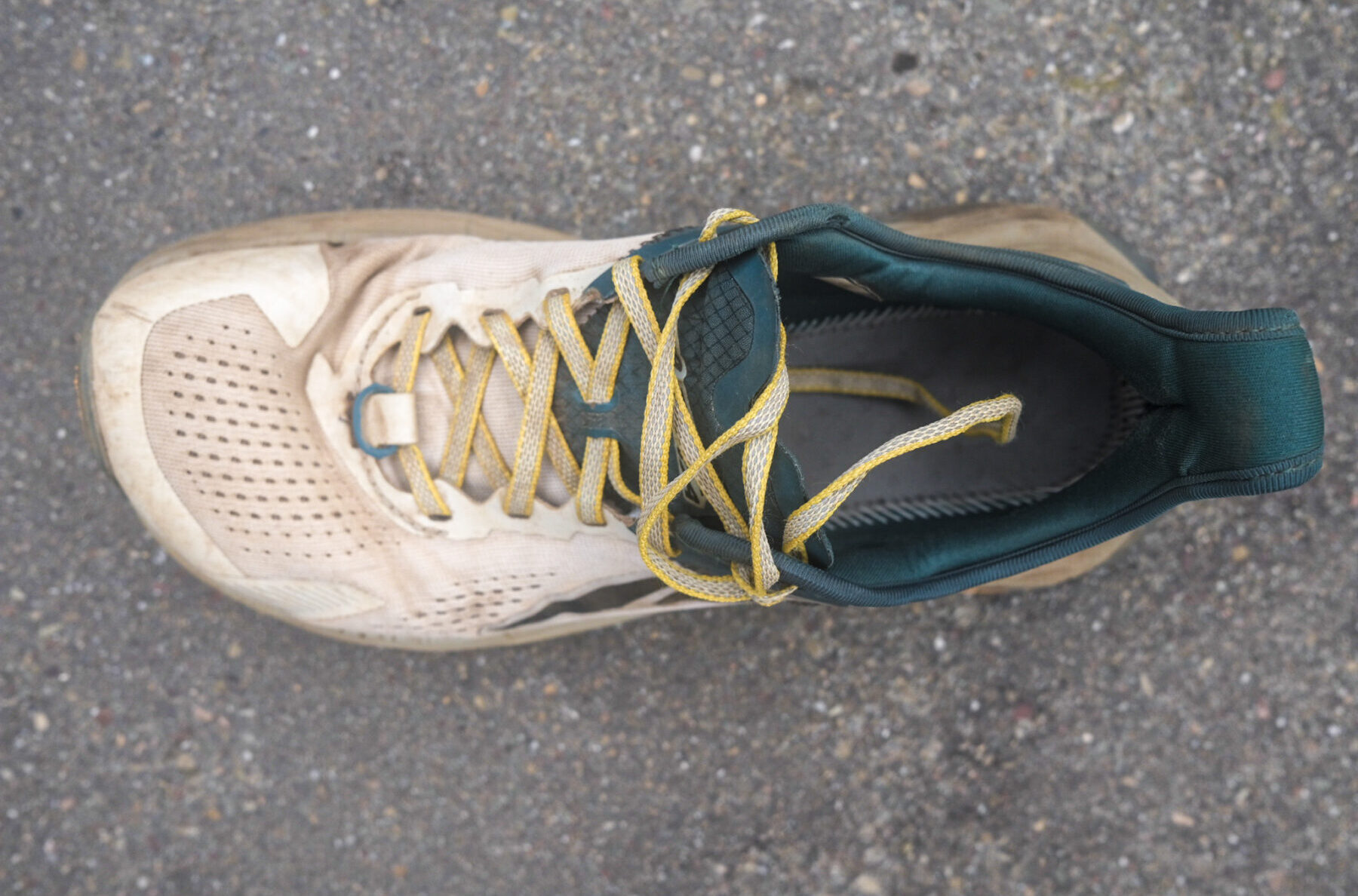
Altra focused most of their attention on the Olympus 5’s upper when revamping the shoe, and for the purposes of affecting fit, I think the subtle changes they made can be considered improvements. The softer engineered mesh sits comfortably on top of the metatarsals and seems flexible enough to accommodate most foot shapes; meanwhile, the shoe’s restructured heel collar, which climbs much higher than the Olympus 4’s, includes furrowed padding that embraces and supports the Achilles tendon. The Timp 4, which we reviewed here, received a similar update to its heel collar, a welcomed sign that Altra is taking more seriously the demands that zero-drop shoes place on the muscles and tendons of the lower leg. With the added support, I never felt even a hint of heel slippage when running in the Olympus 5, something I’m sure goes a long way in preventing irritation in that area.
Truthfully, I imagine this section will mainly service folks who are new to the distinct fit of Altra shoes, which, as I said, works for some folks and not for others. Altra will claim that their footwear is suitable for all foot types, and while that may be true to varying degrees, I’ve found that runners with narrow, high-volume feet struggle with many of their models. That said, the best approach is always to try them on for yourself. And for longtime Altra fans, know that the best part of the Olympus 5’s fit is its similarity to past versions of the shoe.
Weight
I find car analogies in shoe reviews to be tiresome, kind of like mental ticks, but sometimes there’s just no other way to communicate a point. So, I’m going to break one of my own thin rules and install one here with the hope that it helps service this review.
Gas mileage and efficiency are not front of mind when peeling out of the dealership lot in a Hummer H2 (10 MPG city, 13 highway). You climbed into the front seat of that repurposed military vehicle with visions of rock crawling and fording tributaries while blasting Thin Lizzy, not being gouged at the pump. I think a similar mentality must apply to the Olympus 5, which makes no attempts to hide its portliness. At 350 g for a US Men’s Size 9, it’s a lot of shoe for a lot of distance, a stature it proudly owns. For reference, here’s how the Olympus 5’s stated weight compares to the stated weights for some other similar models. All weights are based on a US Men’s Size 9.
280 5 / 9.9 oz — Altra Mont Blanc
295 g / 10.4 oz — On Cloudultra
300 g / 10.6 oz — Inov-8 Trailfly G 300
309 g / 10.9 oz — The North Face Enduris II
312 g / 11 oz — Brooks Caldera 6
312 g / 11 oz — Saucony Endorphin Trail
323 g / 11.4 oz — New Balance Fresh Foam X More Trail v2
332 g / 11.7 oz — Hoka Stinson ATR 6
350 g / 12.3 oz — Altra Olympus 5
Nearly 20 g heavier than the Hoka Stinson ATR 6, historically a reference point in the maximal shoe category, the Olympus 5 staggers into a lonely weight class. What’s more, the shoe gains 21 g not carried by the Olympus 4, transgressing the custom of making each subsequent version of a given model lighter and lighter. This might read as contradictory to my point about the Olympus 5’s heft not really mattering much considering its intended use as an ultra-ultra-distance shoe, but weight is no longer inconsequential after a certain point. 350 g seems to be the upper limit a shoe can support while still managing to feel runnable; an ounce more and I fear most of my outings in the Olympus 5 would be slowed to a walk. At a sprightly 280 g, Altra’s new Mont Blanc, which debuted earlier this year, provides a similar level of cushioning in a more race-specific orientation, likely a better option for runners who prefer moving at a quicker pace.
Upper
Some may chalk up the Olympus 5’s updates as purely cosmetic, like an underhanded attempt to lure customers into upgrading their shoes for the sake of staying up to date with the newest-looking model. I’m sure many shoe companies are guilty of this ploy, it’s not exactly an original grift after all, but I think Altra is innocent in this case. The Olympus 5’s restructured upper, specifically its sturdier heel collar, gusseted tongue, and gentle engineered mesh, demonstrate the brand’s willingness to smooth out the remaining wrinkles left in the highly-regarded Olympus 4.
For such a behemoth of a shoe, the Olympus 5’s upper stays pretty frugal. Aside from a thin TPU overlay flanking the toe cap, the forefoot and midsole consist of a single piece of perforated engineered mesh that rises to the eyelets on either side of the shoe’s gusseted tongue, where it’s secured with moccasin stitching. Unlike the Timp 4, which uses a looser, lighter-weight knit upper, the mesh Altra settles on for the Olympus 5’s is noticeably thicker and, in my experience, doesn’t breathe as well. However, it did hug my foot comfortably, likely a benefit of its elasticity, and its heaviness felt more protective than most knit materials I’ve encountered in other shoes. Shoe design is largely a matter of trade-offs, and in this case, I’m more than happy to sacrifice a bit of ventilation and weight for coziness and durability.
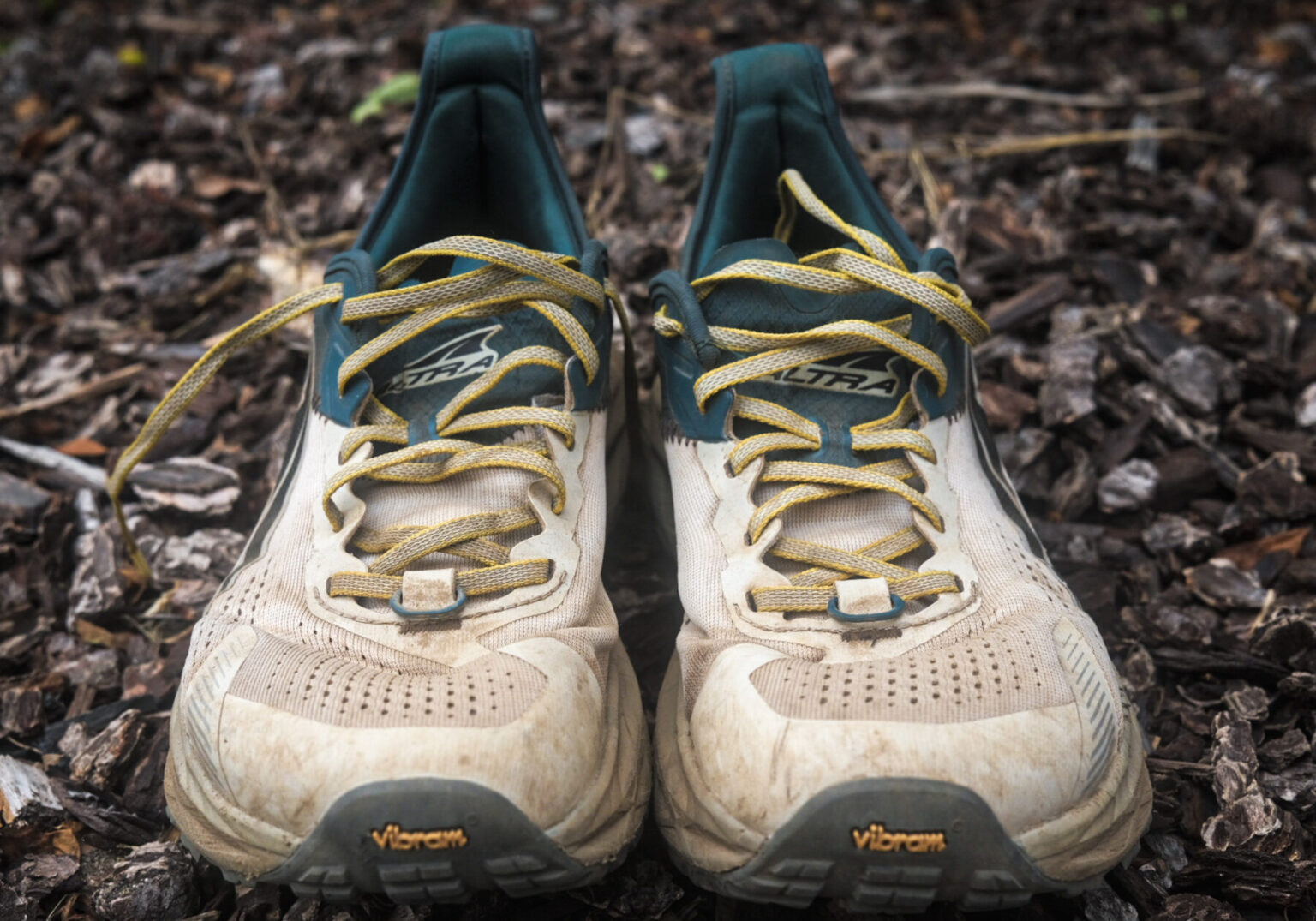
I’ve already commended Altra for their efforts to beef up the Olympus 5’s heel collar, an area of added importance considering the shoe’s zero-drop geometry, but every bit of adulation is deserved. Its raised height and plump beds of cushioning softly embraced my Achilles, helping offload some of the stress placed on that tendon while running uphill. If you’ve written off Altra shoes due to a history of heel slippage, or stayed away from them out of concern for your ankles, I’d implore you to revisit models with their reworked heel collars, which now include the Olympus 5 and Timp 4.
Altra’s history of fumbling lace design is becoming a hallmark of theirs. Despite crafting well-intentioned uppers that generally perform well, many of their models are blemished by flimsy laces that don’t stay tied, are awkwardly positioned, or are either much too long or much too short. With laces that both come undone easily and are much too short, the Olympus 5 is unfortunately another offender. While swapping out Altra’s stock laces for a set of more compatible aftermarket ones is relatively painless, I can’t say I wasn’t a bit disgruntled in doing so. However, in the grand scheme of things, easily correctable lace issues are just a minor wart on the Olympus 5’s otherwise excellent upper, a legitimate improvement from past iterations of the shoe.
Midsole
Altra stood pat when it came to updating the Olympus 5’s midsole, trusting that they’d found a winner in the Olympus 4’s, all 33 mm of it. While I was a vocal fan of that shoe, finding that it outperformed models like the Hoka Speedgoat 4 and Hoka Stinson ATR 6 the further I pushed the distance of my runs, I anticipated changes to its midsole composition as it graduated to its 5th iteration. Altra debuted a new proprietary foam compound earlier this year that they call “EGO MAX,” which is a blend of EVA reserved for premium models like the Mont Blanc, Torin 5, and Timp 4. Slightly denser, and with more pop / rebound than their standard EGO foam, I fully expected EGO MAX to show up in the Olympus 5, which, at $180, is one of Altra’s most expensive shoes, one you’d figure would receive first-class treatment. So, to say that I was nonplussed to learn that the brand stuck with their basic compression-molded EVA through the shoe’s update would be putting it mildly.
But after mulling it over a bit, I eventually warmed up to the decision to forgo altering the Olympus 5’s midsole. In the context of a, dare I say, hyper-maximal shoe like the Olympus 5, a model intended to coddle feet for endless miles, installing an incredibly energetic foam like EGO MAX is out of step with the shoe’s mission. Compression-molded EVA, on the other hand, is much softer out of the box and, in my experience, doesn’t pack out as quickly. Sure, its energy return can feel a little lifeless when running at higher intensities, but again, that should be done sparingly in this shoe anyways (and that running is better catered to by the Mont Blanc). Its combination of thickness and suppleness confer the Olympus 5’s midsole protection akin to lower-stack models with a rock plate (absent in the Olympus 5) and a degree of ground feel / flexibility that still allows the foot to function properly.
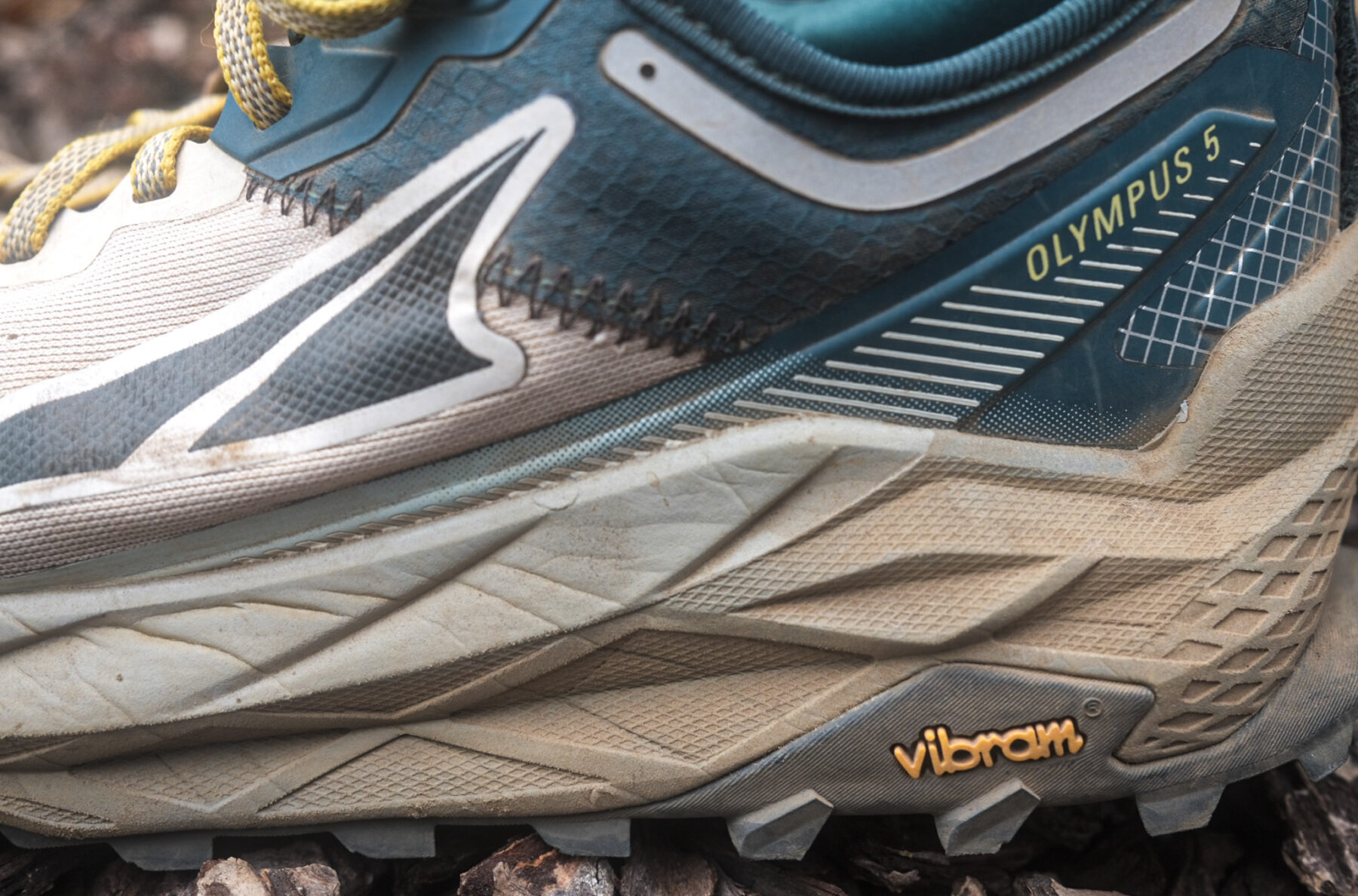
Outsole
I’ve ranted about my many qualms with the “Maxtrac” rubber compound Altra uses throughout their lineup extensively in the past, so when I saw that the Olympus 5 was set to receive the same Vibram MegaGrip outsole present on the 4, I let out a deep-chested sigh of relief. Both versions feature several rows of canted 4 mm “Trailclaw” lugs made from MegaGrip rubber under the forefoot, heel, and along the perimeter of the outsole, with a section of lugged foam left exposed beneath the midfoot. For most folks, the Olympus 5 will spend its life on established trails, its size likely an impediment preventing it from being used as an option for scrambling and/or sketchy off-trail travel. For more domestic use on hard-packed singletrack, rocky fire roads, and mild to moderately technical terrain, its outsole should be more than sufficient.
Taking care to ensure that the most amount of grip is concentrated in the front third of the shoe is smart, considering the Olympus 5’s zero-drop geometry will bias runners toward more of a forefoot strike than shoes with a steep heel-to-toe differential. That said, Altra demonstrated a bold uncaringness toward the Olympus 5’s weight when they elected to make it heavier than its predecessor, so I find attempting to trim a few grams by withholding a full-length Vibram MegaGrip outsole kind of perplexing.
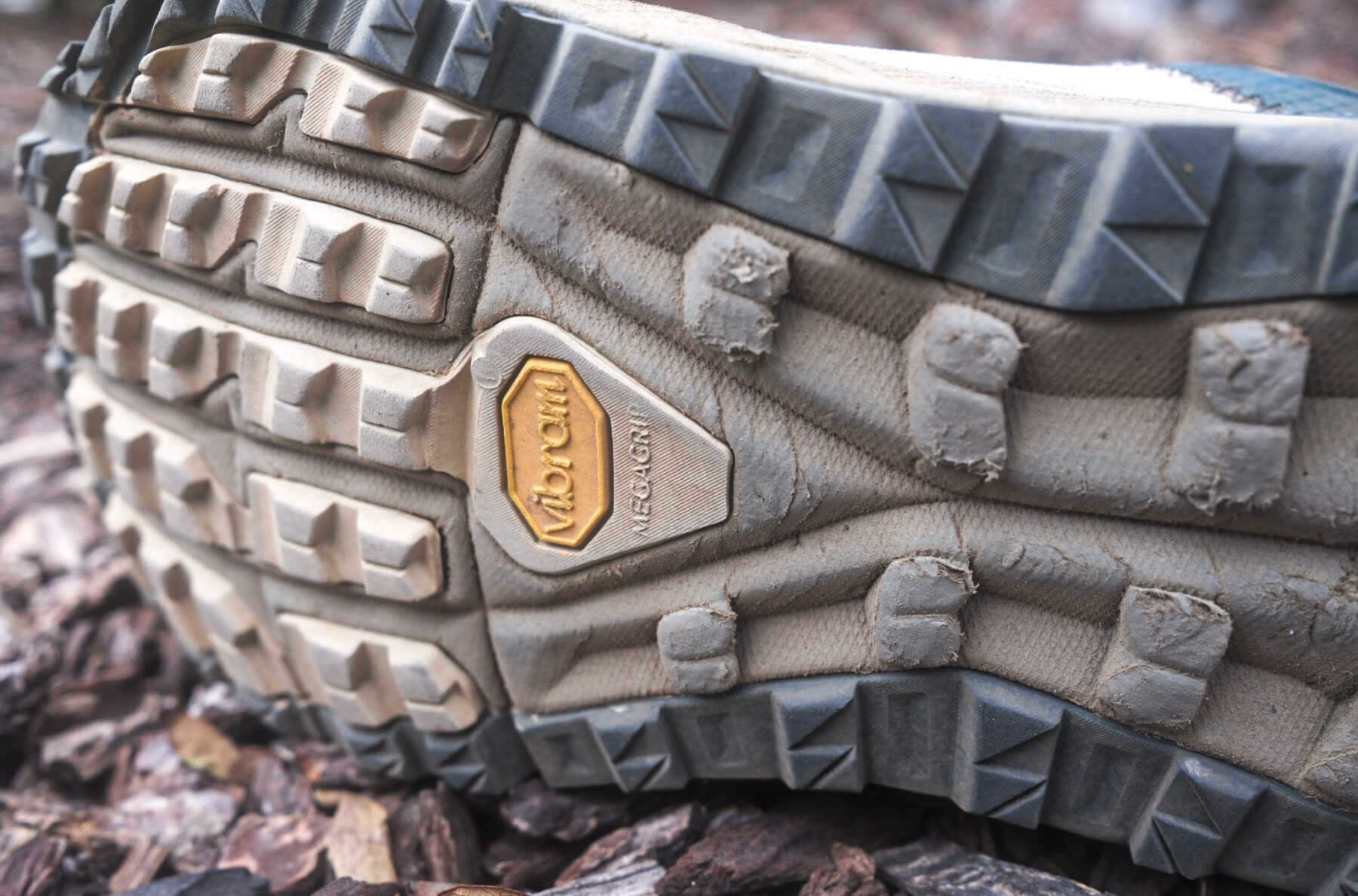
On Trail
Feeling sentimental toward a shoe sounds like a symptom of some deeper-rooted issue bubbling up to the level of consciousness, but I can’t help having an emotional attachment to Altra’s Olympus line (what an absurd thing to write!). We break up the narratives of our lives into befores and afters, divisions made by watershed events like marriage, childbirth, graduations, etc. For me, thru-hiking the Pacific Crest Trail in 2018 served as one of those great timeshifts, an incalculable event that shed the familiar skin of everything I had experienced before it. Many of the 100-something days it took me to complete the PCT were spent gazing down at my feet casted in a pair of the Olympus 3.5, a silhouette forever impressed into my memory from that fateful summer.
Running in the Olympus 5 has been much like I imagine seeing the vestiges of an old friend in one of their grandchildren; its looks are younger, perhaps more stylish, but its spirit remains the same. The roughly 110 miles I’ve put in my pair so far have all come in large chunks, with my longest run creeping north of the 50k mark. 30ish trail miles is, in my mind, right around the distance that the Olympus 5 really starts to separate itself from its competitors. Its midsole’s compression-molded EVA foam felt like it held its integrity better than the EVA Hoka uses in models like the Stinson ATR 6, Speedgoat 5, and Challenger ATR 6, which I’ve found has a tendency to “pancake out” some when asked to move into ultra distances. The extra room afforded by Altra’s Original last also became more advantageous the farther I ran, granting space for my feet to swell, but the gusseted tongue, restructured heel collar, and engineered mesh upper still guaranteed a more or less locked-down fit through the midfoot / hindfoot when I needed it. If I had an excuse to run farther in the Olympus 5, I would.
If you’ve studied the total mileage I’ve spent testing the Olympus 5 in relation to the average length of my runs in the shoe, basic algebra will tell you that I’ve actually only run in it about half a dozen times (so far). That’s not too far off. At shorter distances, like 7-12 mile runs that make up the bulk of my weekly training, the Olympus 5 often felt slushy and excessive, clearly the wrong caliber of shoe for anything excepting more than a few hours on feet. Altra shoes are already somewhat polarizing because of their unorthodox fit, and everything that makes the Olympus 5 a phenomenal ultra-distance option can be thought to further narrow its audience, myself included. As we move into the “off-season” and my running enters somewhat of a fallow period, my pair likely won’t get a ton of use until the spring days (and longer outings) arrive.
Durability
As I’ve mentioned in past reviews of Altra shoes, their build quality has a pattern of leaving me unimpressed. Whether in the form of sidewall blowouts, overlay delamination, upper punctures, or prematurely worn outsoles, it seems like there’s always something preventing me from taking one of their models past 250ish miles. This trend was recently upset by the Timp 4, which I found to be pretty resilient, and so far, the Olympus 5 has followed suit. Aside from a few abrasions and scuffing on the exposed section of foam on its outsole, the shoe is free from any glaring signs of wear. At 110 miles, I’m not yet confident enough to make any definitive claims about how well I think the Olympus 5’s midsole will age, but pressed to forecast, I don’t anticipate a major tailing off in the level of cushioning it provides anytime soon. As always, if anything changes down the line I’ll be back with updates.
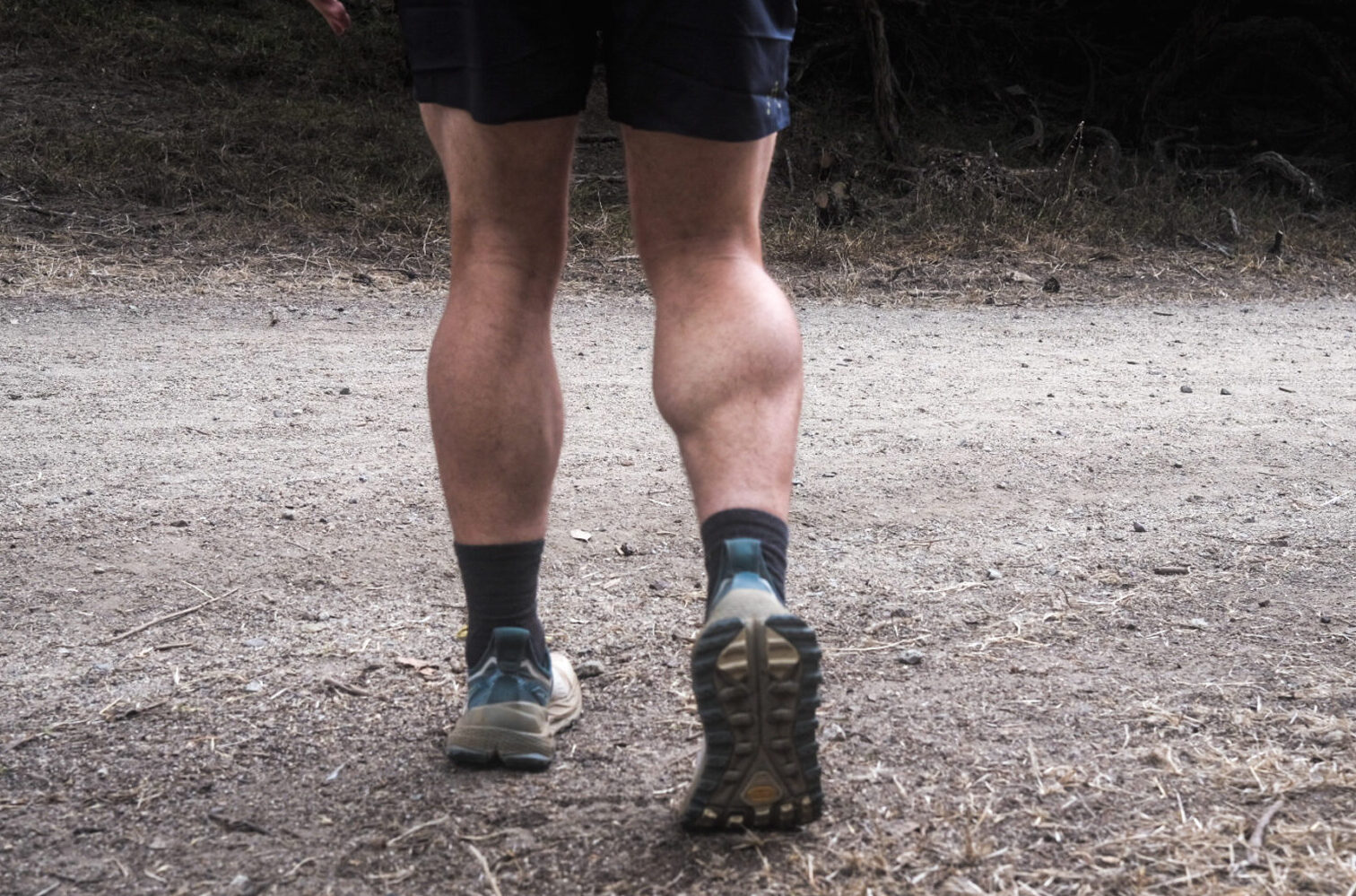
Who’s It For?
The Olympus 5 carries on the venerable tradition of being Altra’s highest-cushioned, maximalist trail shoe. Fans of the model who’ve come to past iterations seeking an accommodating fit and a towering stack height won’t be disappointed by what many consider the Olympus 5’s nominal updates. However, at 350 g, its weight (and overall size) can alienate runners looking for a nimble option for faster paces / shorter distances, a style the shoe is decidedly not best suited for. Some may even find the Olympus 5 to be too cumbersome for even medium-distance efforts, opting instead for less burly models like the Altra Timp 4 or Hoka Speedgoat 5. But for folks experienced with (or interested in) Altra’s ZeroDrop geometry and FootShape Fit looking for a long-range maximal trail shoe that really starts to shine as the miles pile up, I’d wager you won’t find a better option than the Olympus 5. And, like its predecessors, the Olympus 5 can also double as a plush hiking shoe, and comparing it to that class, its weight starts to look much more reasonable.
Bottom Line
Updates to shoes are often driven by marketing cycles rather than necessity, a bid to win back some relevancy by releasing a new model each year. That pressure to evolve a given line by constantly reinventing it season after season has derailed many popular trail shoes in the past.
The best footwear companies show restraint in this respect, understanding when a model’s complete overhaul is called for and, more importantly, when it’s not. The Olympus 5’s brightest attributes are the areas Altra didn’t touch, and while that may be unglamorous, it’s worth celebrating. As a stocky, maximalist (in every sense of the word) trail shoe that excels when pushed deep into ultra-distances, the Olympus 5 won’t disappoint fans of Altra’s perennially highest cushioned model. While its undeniable heft and Altra’s widest fit don’t make it ideal for runners looking for an agile option for shorter efforts, the Olympus 5 is still one of the best choices on the market for those looking to run an exorbitant amount of miles on trail all at once.

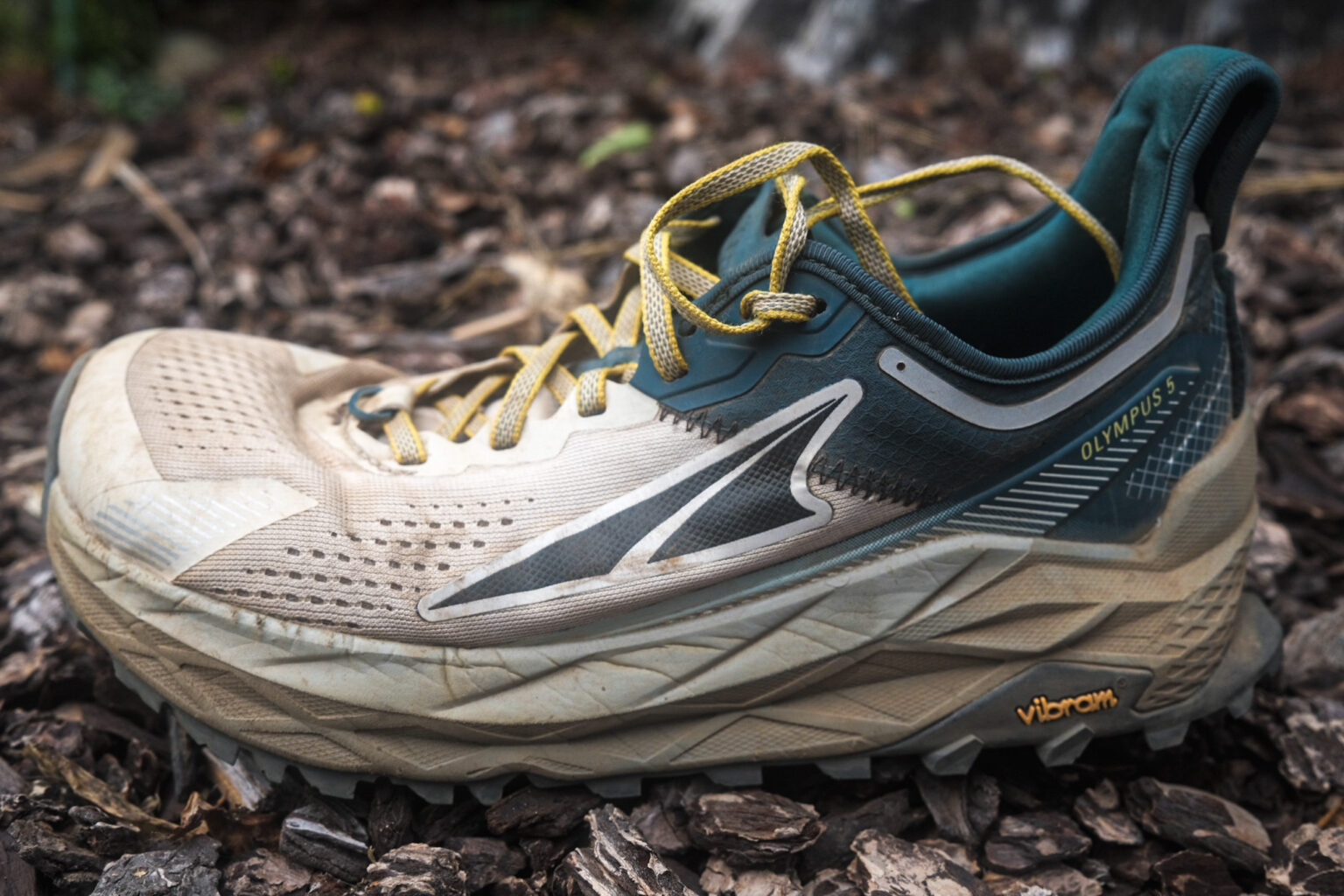
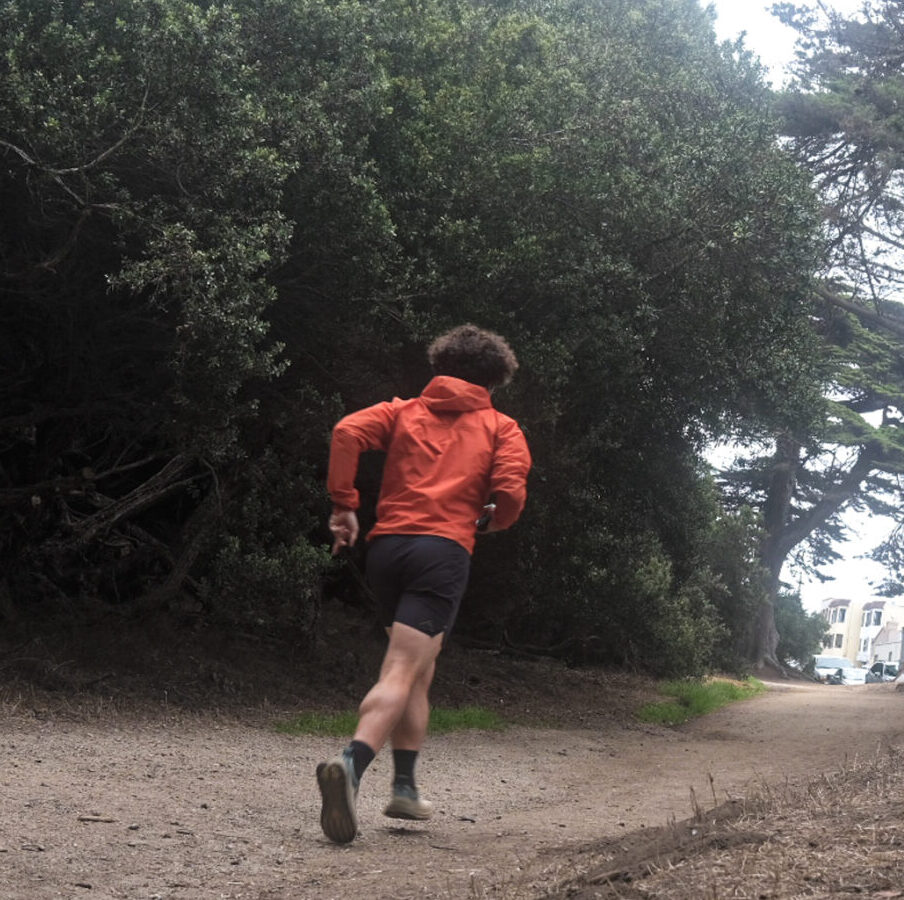

There are a couple of (minor) gripes with this New Olympus compared to the former Version that made me buy the 4.0 again though.
1.the overlays especially at
The toebumper: it’s more noticeable with the toes from the inside while running and it somehow requires more space inside the toebox so i really think i would have to size up a halfsize which is strange…with the 4.0 there is ZERO uncomfyness anywhere inside the shoe to complain and the shoes are 100% true to size.
2. The Laces and the whole Lacing System:
5.0 Flimsy, short and not very efficient. with the 4.0 its not perfect either but way better to lace up before bombing down some technical Trails.
3. The Upper Mesh is so and so…its a bit more airy but got less structural support than the 4.0 Upper so offcamber situations ontrail feel more vague.
The weight of the whole shoe is the same though (within 5grams each) as far as my 2 pairs of 4.0 AND the 5.0 pair i got, so no disadvantage at least here with the 5.0.
Finally looks,….totally individual Taste thing but i fukken love the colour offerings of the 4.0
Our sole came off after 40 km in 100 km event, total mileage less than 150 km. Not impressed.
Mine fell apart in less than 50 miles altra refused to honor the warranty after more than a dozen pairs of altras I am moving to another brand permanently.
Bought my pair before a hike on August 20th. Second hike and the back of one of them blew out. Cannot find my receipt (young daughter got the bag it was in and used it to play with), so I’m out $169.95+ tax for two hikes.
Love the shoe, but this is almost scam-level bad durability.
Insightful review! Your blog post on the Altra Olympus 5 running shoes provides valuable insights into their performance and features. This detailed analysis is helpful for runners looking to make informed shoe choices. Thanks for sharing your experience with the Altra Olympus 5!